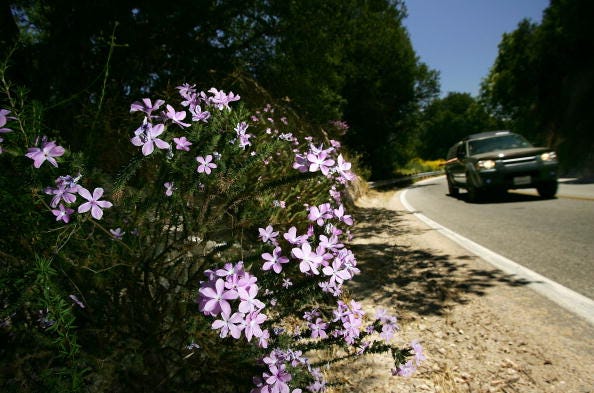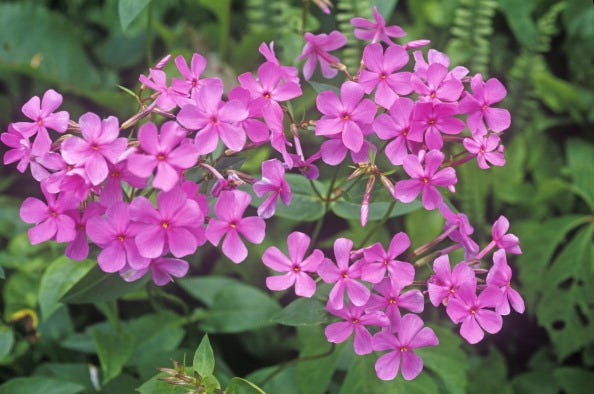This past week at Steady, we have been celebrating spring, and particularly the beauty of flowers. Our last Smile for a Saturday highlighted the exquisite melding of human voices in the “Flower Duet.” William Wordsworth’s poem “Lines Written in Early Spring” inspired us into reflection about our troubled times and “what man has made of man.” And we celebrated a movement to leave lawns wild “for the bees,” those prodigious pollinators.
Well, I hope you will indulge me at least one last paean to the season.
Perhaps it comes with age, but each trip around the sun feels like a particular blessing. And the renewal that I have always felt with the season has provided me with my own sense of steadiness this year.
A few days ago, I joined my wife, Jean, and daughter, Robin, on a road trip of sorts out of Austin and west on U.S. Highway 290 into the Texas Hill Country.
The towns we passed, Dripping Springs and out toward Blanco, served as part of the journey rather than destinations of their own. We had hoped to see carpets of wildflowers, particularly the bluebonnets, but also such personal favorites as the Indian paintbrushes and Indian blankets. We did find some flowers, as the pictures will attest. But there were far fewer than we had expected, apparently due to the dry conditions plaguing the state:
Well, all this has me praying for rain. It also had me thinking back to something we wrote at Steady a year ago about the wildflowers. A lot of you have joined us since then, and we sometimes find it interesting to go back and reread pieces from the past. So for this Smile for a Saturday, we thought we would revive an excerpt from that original newsletter, along with the beautifully inspiring pictures.
Spring has sprung. And with that milestone comes one of the most joyful periods on earth: wildflower season. From my beloved bluebonnets, the state flower of Texas, to whatever blooms in your neck of the woods (or highway median), this is a time of random splashes of color and a moment to revel in nature’s ability to sow awe.

Webster’s Dictionary defines a wildflower as “the flower of a wild or uncultivated plant or the plant bearing it.” And it is the wildness and uncultivated nature of these gems that, in my mind at least, is a big part of their allure. The notion of a “garden” is something that exists in cultures around the world. What that has often meant is an attempt to bend nature to the boundaries and limits of the human mind. It has meant carefully placing plants, shaping landscapes, and imposing a sense of “order.” To garden, itself a verb, is defined by several other verbs to this effect: cultivate, breed, plant, manicure, excavate. Wildflowers can of course be planted in gardens, and this seems to be becoming a more popular endeavor. But even in that case, there is a sense that it is injecting an element of the wilderness.
There is a familiar saying on the subject: “One person’s wildflower is another person’s weed.” And this gets to the heart of the matter. It conveys that when viewing the natural world, perspective matters. Wildflowers can sprout up without warning. They are a reminder that disorder is the ultimate direction of nature. They crack through our pavements and vain human attempts to perch ourselves above the rest of life on Earth. Their beauty taunts our own fallibility.
There are thousands of wildflower species in the United States alone. Many of those we see originated somewhere else — not unlike many of us who now call this land home. For wildflowers are travelers in their own right. They have spread across the seas as stowaways, on ships’ ballasts, in pants pockets, stuck into the crevices of a global web of human and cargo transport. They are intrepid immigrants seeking a hospitable home to set down roots. Like all of life, they grow, flower, and disappear into memory.
One of the great heroes of wildflowers, in Texas and beyond, was Ladybird Johnson, the wife of President Lyndon Johnson. She had grown up a shy girl in East Texas, losing her mother when she was only five years old. Like many who have endured trauma and heartbreak, she found solace in nature. And thus she developed a lifelong love of all things wild, including flowers. Later in life, she became a tireless champion for wildflowers. Alongside actress Helen Hayes, Johnson established a center to promote native plants and wildflowers. (That center still bears her name today.) She was particularly determined to bring plant life to the sides of highways, injecting splashes of color and natural beauty into landscapes scarred by pavement.
One underrated quality of wildflowers is their persistence. Wildflowers bloom in landscapes that have burned. They can once again dot farms that have gone fallow or peek out from old factories that are crumbling. They are, like the season of spring, a sign of rebirth, of the resilience of nature, and of the ability of beauty to be concentrated in a few colorful petals. They are striking when viewed atop a single stem, and they paint entire vistas with swaths of undulating color. They are precarious, easily plucked, and yet in their aggregate, they provide a sense of seasonal stability. They inspire painters and poets, brighten the lives of children and the elderly, and beckon country folk and strollers through a city park.
I have shared below a photographic montage of wildflowers, but my hope is that you can fill the comments with your own pictures, reflections, and favorites.
For as long as I have God’s grace to open my eyes and take in a spring day, wildflowers will bring peace, joy, a smile, and a sense of calm. Steady.















I’ve always loved the idea that weeds are just flowers with bad press.
Walk lightly in the Spring, Mother Nature is pregnant. Kiowa